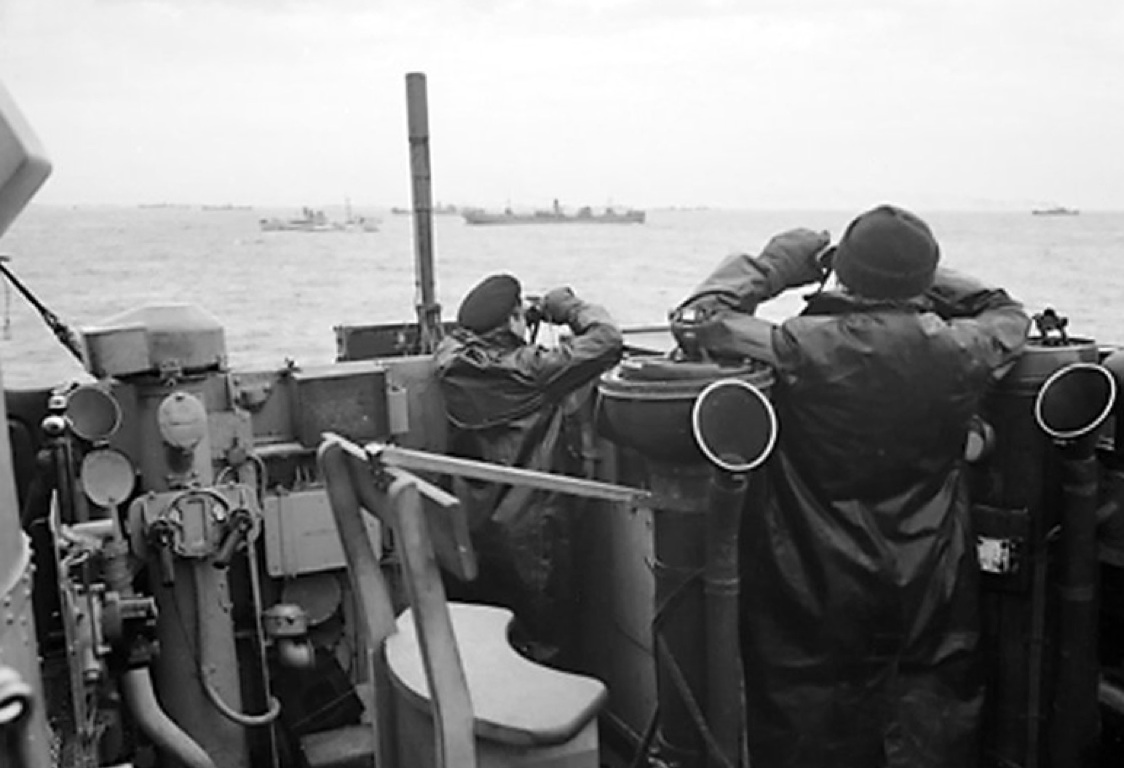This Day in Naval History - Operation Stonewall
operation stonewallwas a World War II operation to intercept blockade runners off the west coast of France. It was an effective example of inter-service and inter-national co-operation.
BACKGROUND:

From the start of the war, the Allies had maintained a blockade against the import by Germany of seaborne goods. Although rich in many basic industrial materials, Germany, like Britain, could not produce some essentials. These included rubber, tin and tungsten.
Until the German invasion of the Soviet Union in June 1941 (Operation Barbarossa), the blockade was evaded via the Trans-Siberian Railway and large quantities of materials were shipped by this route. Once this was closed, German and Italian ships, stranded in Japan and Occupied Singapore, were used to bring in these essentials to ports in Occupied France. These were the blockade runners.
Although an organised interdiction against these blockade runners could not be set up until December 1943, several ships were intercepted and sunk in the Atlantic and Indian Oceans. Few actually managed successful runs.
the operation:
The New Zealand cruiser, HMNZS Gambia, joined the operation in December, 1943, and operated from Horta, in the Azores, with HMS Glasgow, patrolling an area north of the islands.
On 23rd December 1943, aircraft from the American escort carrier USS Card spotted a suspected runner, and there were further reports of a flotilla of destroyers escorting another merchantman west from France. HMS Gambia, HMS Glasgow, and HMS Enterprise formed a cordon to intercept. Aircraft attacked the flotilla, now escorting an incoming merchantman (SS Osorno), reporting a hit and a near miss on Osorno.
More warships, HMS Ariadne, HMS Penelope, and four Free French destroyers, joined the patrol to intercept another runner.
On Christmas day, 1943 a radio message from the submarine U-305 was intercepted, this would mean the end of the blockade runner Alsterufer.
On 27th December the Alsterufer, under the code name Trave, was intercepted by 423 Squadron, 422 Squadron RCAF, and one from other Squadron from Canada.
311 Czechoslovak Squadron RAF:
Aircraft from RAF Coastal Command acted in close co-operation, before the Allied ships and an RAF strike force could make contact.
Alsterufer was attacked repeatedly and her radio was disabled. Some hours later the shadowing RAF Coastal Command bomber, a Liberator of 311 Czechoslovak Squadron RAF, commanded by Lieutenant Odrich, set her on fire with bombs and rockets. She was then bombed again by two RAF Coastal Command Liberators from 86 Squadron RAF, then the Germans decided to scuttle the ship.
Fifty two survivors were rescued two days later by corvettes of the 6th Escort Group of the Royal Canadian Navy and other ships picked up twenty men.
A cargo of 344 tons of tungsten concentrate that would have met the needs of German Industry for a year, went down with her.
The German destroyers and torpedo boats had set out to meet and escort Alsterufer, in an operation codenamed Bernau, and now HMS Glasgow and HMS Enterprise sought to intercept them. Guided by shadowing Coastal Command aircraft, the cruisers intercepted eight destroyers in the early afternoon of 28th December and exchanged fire with them. Despite accurate German gunfire and torpedoes, effective German evading action and an attack with guided bombs by a Luftwaffe aircraft, the British ships maintained contact.
THE battle of the bay of biscay:
The German ships divided into two groups and the cruisers pursued one of these. By 1600hrs, two Elbing class torpedo boats (T25 and T26) and the Narvik class destroyer Z27 had been sunk and one had been damaged, but escaped. About 62 survivors were picked up by British minesweepers, 168 by a small Irish steamer, the MV Kerlogue, and 4 by Spanish destroyers. The blockade runner Osorno reached the Gironde, but struck a wreck in the estuary. She was beached and subsequently unloaded offshore.
HMS Glasgow, HMS Enterprise and HMS Ariadne returned to Plymouth, and HMS Penelope to Gibraltar. More blockade runners from the Far East were expected, so HMS Gambia and HMS Mauritius maintained the cruiser patrol north of the Azores for the next three days. HMS Gambia then returned to Plymouth on 1st January 1944.
Three more German ships were sunk between 3rd and 5th January 1944 by U.S. Navy patrols in the South Atlantic. These were the last runners.
By Autumn, German armies were retreating headlong out of France and the French ports were no longer open to Axis ships.









